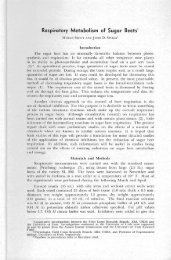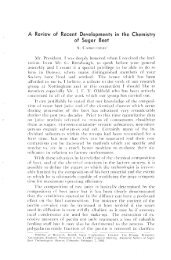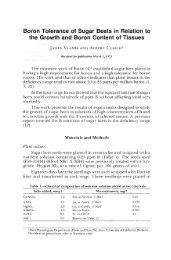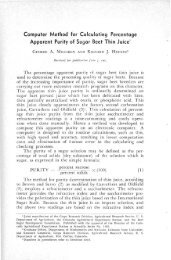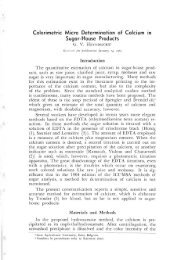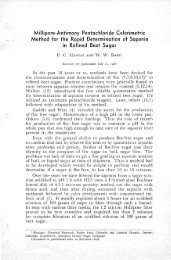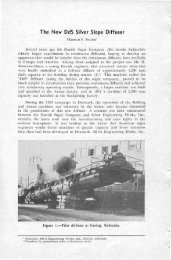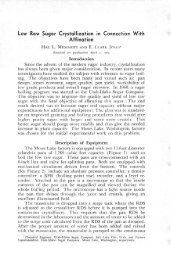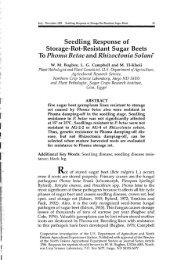Journal of Sugar Beet Research - Vol
Journal of Sugar Beet Research - Vol
Journal of Sugar Beet Research - Vol
You also want an ePaper? Increase the reach of your titles
YUMPU automatically turns print PDFs into web optimized ePapers that Google loves.
1<br />
2<br />
3<br />
4<br />
5<br />
6<br />
7<br />
8<br />
9<br />
10<br />
11<br />
12<br />
13<br />
14<br />
15<br />
16<br />
17<br />
18<br />
19<br />
20<br />
21<br />
22<br />
23<br />
24<br />
25<br />
26<br />
27<br />
28<br />
29<br />
12 <strong>Journal</strong> <strong>of</strong> <strong>Sugar</strong> <strong>Beet</strong> <strong>Research</strong> <strong>Vol</strong>. 45 Nos. 1 & 2<br />
<strong>of</strong> significant control in these tests (Handelsmann and Stabb, 1996;<br />
Lugtenberg et al., 2001). The observed trend towards improved yield<br />
in treatments involving the BCAs in fields with moderate disease pressure,<br />
however, is compelling and warrants further investigation. BCAs<br />
previously have been shown to be effective at reducing A. cochlioides<br />
damage to sugarbeet in field studies outside <strong>of</strong> the Red River Valley<br />
(Jacobsen et al., 2000; Williams and Asher, 1996; Kristek et al., 2006)<br />
The induction <strong>of</strong> systemic resistance in plants by compounds has<br />
been known for decades (reviewed by Hammerschmidt and Kuc, 1995)<br />
and harpin originally was investigated for these properties (Wei et al.,<br />
1992). Recent data are more consistent with harpin’s role as a growth<br />
promoter (Dong et al., 2004), although a species-specific role in disease<br />
protection probably exists. In agreement with this, harpin exhibited<br />
only a moderate ability to protect sugarbeet seedlings in a growth<br />
chamber from the effects <strong>of</strong> A. cochlioides JSBR when infection Metzger and Weiland was initiated 5<br />
with zoospores after harpin treatment at the recommended rate. Poor<br />
disease control also was observed in the field, although this is likely<br />
compounded by colonization <strong>of</strong> seedlings by the pathogen before the<br />
Figure 3<br />
Fig. 3: Recoverable sucrose (Mg ha -1 ) in 2002 at Perley, MN after seed<br />
treatment with B. cepacia and foliar treatment with harpin. Untreated<br />
seed was compare to that possessing MT or MT+H. Additional check,<br />
biological seed coating, or foliar inducer treatments are indicated below<br />
the bars. The open diamond (Ø) indicates the check against which the<br />
significant increase in RSH (denoted by *; LSD 0.05 = 0.94) is noted.<br />
*<br />
*<br />
*



